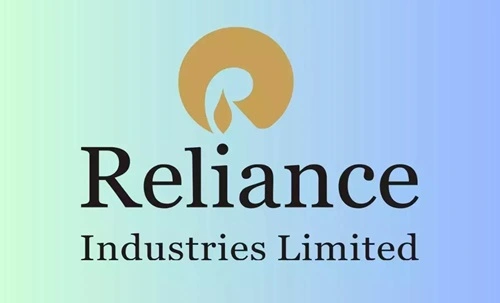Reliance Industries Limited (RIL) has emerged as one of India’s most influential conglomerates, with diversified interests spanning petrochemicals, refining, telecommunications, retail, and digital services. Under the visionary leadership of Mukesh Ambani, RIL has consistently redefined its growth trajectory, adapting to market demands and leveraging technology to gain a competitive edge. The company’s proactive approach to expansion and its successful pivot into digital and consumer businesses make it a unique entity in the Indian corporate landscape. This article delves into a detailed SWOT analysis of Reliance Industries, assessing its strengths, weaknesses, opportunities, and threats and offering insight into its future outlook.

Strengths
1. Diversified Business Portfolio: RIL’s extensive business portfolio, ranging from petrochemicals and oil refining to telecommunications, retail, and digital services, provides it with multiple revenue streams. This diversification mitigates the impact of sector-specific downturns, ensuring sustained growth even if one of its businesses faces challenges.
2. Leadership in Key Sectors: RIL holds a leading position in various sectors. It is India’s largest private-sector oil refiner and petrochemicals producer, and its telecom venture, Jio, has transformed the industry with affordable data rates, making it the largest telecom network in India. RIL’s retail arm, Reliance Retail, has also become the largest retail player in India, providing it with extensive market influence.
3. Strong Financial Performance and Capital Access: RIL’s consistent financial growth and robust balance sheet allow it to fund ambitious expansion plans. Its strong credit rating and reputation enable it to access both domestic and international capital markets easily, securing funding for expansion and innovation.
4. Technological Innovations and Digital Expansion: Through Jio Platforms, RIL has successfully integrated digital services into its ecosystem, catering to India’s digitally savvy consumers. This digital venture has diversified into areas such as broadband (JioFiber), digital payments (JioMoney), and entertainment (JioTV, JioCinema), creating a comprehensive digital experience that rivals global tech giants.
5. Strategic Partnerships and Global Collaborations: RIL has attracted global investments and partnerships, particularly in its Jio Platforms segment, from companies like Facebook, Google, and Silver Lake. These strategic alliances bring valuable expertise, strengthen RIL’s technological base, and enhance its international credibility, which is essential for its global aspirations.
Weaknesses
1. Heavy Dependence on Petrochemicals and Refining: Despite diversification, RIL still relies significantly on petrochemicals and refining, which are highly susceptible to fluctuations in global oil prices and demand. Environmental concerns and the global push towards green energy further increase the vulnerability of this segment, pressuring RIL to accelerate its transition to sustainable alternatives.
2. Debt-Fueled Expansion: RIL’s ambitious expansions, particularly into telecom and retail, have been heavily financed through debt. While it has reduced its debt burden by attracting global investments, the company’s growth has been dependent on leveraging, which may pose a risk during economic downturns or unexpected sectoral challenges.
3. Regulatory Scrutiny and Compliance Risks: As one of India’s most prominent conglomerates, RIL is under constant regulatory scrutiny. Issues around spectrum allocation, anti-competitive practices, and environmental compliance have previously attracted regulatory interventions. This intense scrutiny increases compliance costs and creates potential reputational risks.
4. Challenges in International Expansion: While RIL dominates in India, its global presence, especially in retail and telecom, is limited. Competing on a global scale in these sectors would require substantial investment, operational adaptations, and navigating diverse regulatory environments, which may limit RIL’s growth potential outside of India.
5. Intense Competition in Retail and Telecom: RIL’s telecom arm Jio faces intense competition from incumbents like Bharti Airtel and Vodafone Idea. Additionally, the retail division competes with major players like Amazon, Flipkart, and other regional players, especially as e-commerce gains momentum. The competitive pressures in these sectors demand continuous investment in customer acquisition and retention strategies.
Opportunities
1. Expansion in Green and Renewable Energy: With growing emphasis on sustainable development and clean energy, RIL’s pivot towards green energy presents significant growth potential. Mukesh Ambani’s announcement of a ₹75,000 crore investment in green energy over the next three years underscores RIL’s commitment to clean energy. Its plans include investing in solar, battery storage, and green hydrogen, positioning it to become a leader in India’s green energy revolution.
2. E-Commerce and Digital Transformation: India’s e-commerce sector is projected to grow significantly, fueled by rising internet penetration, an expanding middle class, and increased digital adoption. RIL’s JioMart initiative, a collaboration between Reliance Retail and Jio Platforms, is strategically positioned to compete with Amazon and Flipkart, offering a hybrid model that leverages both digital and physical retail infrastructure.
3. Expanding Jio’s Digital Ecosystem: Jio Platforms’ digital ecosystem is ripe for further expansion into areas such as telemedicine, edtech, fintech, and cloud computing. With India’s burgeoning digital economy, Jio’s extensive reach provides RIL with opportunities to launch new digital services and products catering to varied customer needs, from healthcare access to digital finance solutions.
4. International Collaborations and Market Entry: With the backing of global tech giants like Google and Facebook, RIL can further enhance its technological capabilities, potentially opening up new international markets. Collaborations with established global players provide access to advanced technologies and global networks, facilitating smoother international expansions and knowledge exchange.
5. Government Initiatives Favoring Domestic Production: Government initiatives, such as Make in India and Atmanirbhar Bharat (Self-Reliant India), offer opportunities for RIL to expand its manufacturing operations domestically, especially in sectors such as electronics, petrochemicals, and green energy. These initiatives come with incentives like tax breaks and subsidies, which can help RIL reduce production costs and enhance its profitability.
Threats
1. Economic and Geopolitical Uncertainties: With a diverse business portfolio, RIL is exposed to multiple markets and thus susceptible to economic downturns, global trade tensions, and geopolitical issues. Fluctuations in the global economy can affect its core businesses, particularly petrochemicals, which depend heavily on international demand and trade relations.
2. Climate Change and Environmental Regulations: As a major player in the energy sector, RIL faces increasing pressure to reduce its carbon footprint. Stringent environmental regulations are being enforced worldwide, particularly in developed markets, which could impact RIL’s petrochemical and refining businesses. Non-compliance could lead to fines, production limitations, and reputational damage.
3. Competition in Digital and E-Commerce Sectors: Jio’s success has attracted competition not only from domestic rivals like Airtel but also from global giants such as Amazon, Walmart-owned Flipkart, and other emerging players in digital services and fintech. The intensifying competition could impact RIL’s market share and require continuous investment in customer retention and new offerings.
4. Volatility in Oil Prices and Market Shifts: Reliance’s legacy business of refining and petrochemicals is highly sensitive to fluctuations in oil prices, which are influenced by geopolitical tensions, global supply-demand dynamics, and the transition towards renewable energy. Any long-term decline in oil demand due to environmental shifts could negatively impact RIL’s profitability in this segment.
5. Cybersecurity and Data Privacy Risks: As RIL’s digital footprint expands through Jio Platforms and other digital initiatives, cybersecurity and data privacy concerns become increasingly relevant. Cybersecurity threats and potential data breaches could expose RIL to regulatory penalties, loss of consumer trust, and costly corrective measures.
Future Outlook
Reliance Industries stands at an exciting yet challenging juncture as it pursues bold initiatives in digital and green energy. The company’s proactive diversification strategy has solidified its position as a resilient, future-ready conglomerate, yet it must navigate several potential roadblocks to maintain its trajectory. RIL’s commitment to green energy, its emphasis on digital services, and its focus on domestic manufacturing make it well-aligned with India’s growth priorities.
However, the company will need to stay agile, especially in responding to shifts in global energy policies and advancements in digital technology. In the near term, RIL’s core strengths in retail and telecommunications, paired with its growing green energy initiatives, set a strong foundation for sustained growth. For long-term resilience, it will be crucial for RIL to maintain operational efficiency, mitigate its debt reliance, and invest in sustainability to balance profitability with social responsibility.
In an evolving market landscape, Reliance Industries remains a powerful symbol of India’s economic aspirations and a bellwether for the nation’s industrial and technological progress. As it strengthens its position in digital and green energy sectors, RIL is poised not only to shape the future of Indian industry but also to make a meaningful impact on the global stage.

